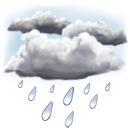
Which hay is best?

Navajo Times | Ravonelle Yazzie Third-grader Leilah Charlie holds the props for her science fair project at this year’s Navajo Nation Science Fair at Church Rock, N.M., on Feb. 27. Charlie researched which hay contains the most sand in samples from Navajo Agricultural Products Industry and Decker Hay Farm.
Young scientist’s project wins first place at Navajo Nation Science Fair
CHURCH ROCK N.M.
Leilah Charlie, 9, very carefully assembled her science fair project titled “Which has the Most Sand?” after lunch had ended during the 2018 Navajo Nation Science Fair.
The Red Rock State Park Convention Center was filled with over 100 children from 35 schools from across Diné Bikéyah who competed in this year’s science fair.
One of them was Leilah, who very diligently took out of her school bag two plastic horse figurines and six little plastic sandwich bags that contained her science experiment before the winners of the science fair were announced.
Moments later, Leilah would be announced as the first place winner of the animal science division for the elementary schools – an award she was confident she would win, she said.
This was her first year competing and the second science fair she has won this year. All the students who competed at the Navajo Nation Science Fair had already won at their school’s fair.
The science fair has seven categories – animal science, behavioral/social science, biology, chemistry, engineering and computer science, environmental sciences and physical science. There are also four different age divisions – K-4th grade, 5th-6th, 7th-8th, and 9th-12th.
Leilah competed in the animal science category in the peewee division.
“My hypothesis is that NAPI (Navajo Agricultural Products Industry) hay will have more sand than Decker Hay Farm,” Leilah said.
The 3rd grader from Mesa Elementary in Shiprock owns five horses and wanted to know what would be the best hay for them.
“According to veterinarians, sand is most likely to cause colic in horses, which is a digestive problem,” she read off her poster board, “or blockage in the intestines.”
She pointed to a picture that depicted the digestive system for horses and said, “If this gets clogged (the intestines) it can, like I said, it’ll be life threatening.”
Leilah was dressed like a cowgirl in a paisley button-up shirt, boot-cut jeans and a pair of dark brown boots to match her project.
She has been riding horses since she was about four and this is why she decided on this science experiment.
“My experience with NAPI hay is that it just falls apart like it contains a lot of sand,” she read aloud.
She wanted to answer a different question but decided not to change it.
“First, I tried different kinds of questions and then I was, like, ‘Oh, I’ll just go with the one that I have for my title,’” she explained.
Her experiment involved buying one bale of NAPI hay and a bale from Decker Hay Farm, water, a sifter and sandwich bags.
Leilah explained that she sifted a small portion of hay from each bale, took a small handful from each, placed it in a sandwich then added six ounces of water.
She shook the bag up, waited five minutes and eyeballed how much sand she could see at the bottom of each sandwich bag.
“My experiment led me to a true hypothesis,” she said. “NAPI hay contains the most amount of sand.”
She said her findings have convinced her to feed her horses Decker hay over NAPI hay.
“It’ll keep them safe from dirt,” Leilah said.
Now Leilah and six other Navajo students are headed to the Arizona Science and Engineering Fair on March 22, said Johanson Phillips, the coordinator of the science fair.
He’s a principal education specialist with the Navajo Nation Department of Education and took over the Navajo Nation Science Fair eight years ago.
“It looks like the projects are getting better in terms of research,” he said.
When he first started coordinating the science fair, only 12 schools competed that first year and the projects didn’t follow the scientific method very well.
“There is more data to their projects,” Phillips said. “And the students are learning the scientific method, which is good. They’re using that in their research.”
This year there are about 800 projects from 60 schools and only the top two from each school get to compete at the Navajo Nation Science Fair.
This year they got 13 more schools to participate in the Navajo Nation Science Fair and every year it’s growing, said Phillips.
“It’s really gotten big,” he said.
Today, the junior high and senior divisions will be competing in the third and final day of the Navajo Nation Science Fair.
Editor’s note: See the results of the science fair in next week’s issue.
To read the full article, pick up your copy of the Navajo Times at your nearest newsstand Thursday mornings!
Are you a digital subscriber? Read the most recent three weeks of stories by logging in to your online account.








 Highway 264,
Highway 264, I-40, WB @ Winslow
I-40, WB @ Winslow